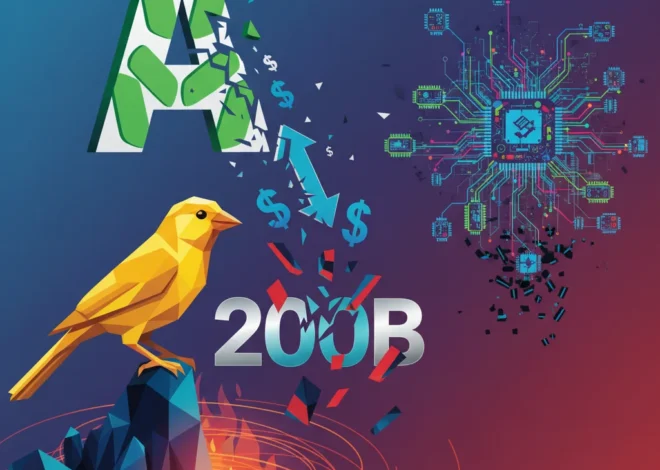
The Investor’s Crossword: Decoding Market Complexity One Clue at a Time
Every morning, millions of people begin their day with a ritual: coffee and a crossword. It’s a mental warm-up, a challenge of wit and vocabulary. But what if this daily puzzle held a deeper lesson, a framework for understanding the complex world of modern finance? The grid of a crossword, like the Financial Times Crossword Number 18,206 that inspired this analysis, is a microcosm of the global economy. Each clue is a market signal, each answer a strategic decision, and the entire puzzle an interconnected system where one wrong move can unravel everything.
For investors, finance professionals, and business leaders, the parallels are striking. We are all, in essence, trying to solve a puzzle with incomplete information and cryptic clues. We look at economic data, geopolitical events, and technological disruptions, trying to fill in the blanks to build a coherent picture—a profitable portfolio, a resilient business model, a sound economic forecast. This isn’t just about finding the right answers; it’s about understanding how they connect, influence, and depend on one another. By adopting the mindset of a master puzzle solver—patient, analytical, and able to see the bigger picture—we can learn to navigate the intricacies of the stock market, banking, and the ever-evolving landscape of financial technology.
The Grid as Your Portfolio: Interconnectedness and Diversification
The first thing you notice about a crossword puzzle is its structure. It’s a grid of interlocking words. You can’t solve the “Across” clues without considering the “Down” clues. A correct answer in one direction provides letters—valuable information—for answers in the other. This elegant interdependence is a perfect metaphor for a well-diversified investment portfolio.
In the world of investing, assets are rarely isolated. The performance of the stock market can influence bond yields. Fluctuations in commodity prices can impact the currency markets. A boom in financial technology (fintech) can disrupt traditional banking sectors. A portfolio concentrated in a single asset class is like trying to solve a crossword by only focusing on the “Across” clues; you’re ignoring half the puzzle and are incredibly vulnerable if your initial assumptions are wrong.
Diversification is the strategic principle of filling the grid from multiple angles. By holding a mix of assets—equities, fixed income, real estate, and alternatives—an investor ensures that a downturn in one area doesn’t collapse the entire structure. A loss in one “word” can be offset by gains in another, maintaining the overall integrity of the portfolio. This principle is more critical than ever in today’s volatile economy, where black swan events and rapid technological shifts can change the game overnight.
The Scarcity Premium: Why Human Insight is the New Gold in an AI-Driven Economy
Decoding the Clues: From Cryptic Signals to Strategic Answers
The true art of the crossword, especially a cryptic one like those in the FT, lies in interpreting the clues. They are deliberately misleading, filled with double meanings, anagrams, and wordplay. Similarly, market signals are rarely straightforward. A strong jobs report might seem positive, but it could also signal inflationary pressures that lead a central bank to raise interest rates, a move that could cool the stock market. Interpreting these signals requires a deeper level of analysis, moving beyond the headline to understand the underlying mechanics.
Let’s examine a few “answers” from FT Crossword 18,206 and see how they function as key concepts in today’s financial puzzle:
1. STRATEGIC (9-Across)
This is the cornerstone of all successful financial endeavors. A strategy is more than just a plan; it’s a framework for decision-making in the face of uncertainty. In investing, this could be a value investing strategy, a growth-focused approach, or a passive indexing strategy. In business, it’s the long-term vision for market positioning, product development, and competitive advantage. A “strategic” approach to the economy means a government and its central bank have a clear policy for managing inflation, unemployment, and growth, rather than reacting haphazardly to every new piece of data.
2. ASSET (15-Down)
At its core, all finance and investing revolves around the management of assets. An asset is simply a resource with economic value that is expected to provide a future benefit. Traditionally, we think of assets as stocks, bonds, and real estate. However, the definition of an “asset” is expanding dramatically, driven by financial technology. Digital assets, powered by blockchain technology, are a new frontier. Intellectual property, data, and even brand reputation are now recognized as critical intangible assets on corporate balance sheets.
The table below illustrates the contrast between traditional and emerging digital assets, highlighting the shift in the modern economy.
| Characteristic | Traditional Assets (e.g., Stocks, Real Estate) | Digital Assets (e.g., Cryptocurrencies, NFTs) |
|---|---|---|
| Governing Body | Centralized (Regulated by SEC, central banks) | Often Decentralized (Governed by code and community) |
| Form | Physical or legally certificated | Purely digital, cryptographic |
| Trading Hours | Defined market hours (e.g., 9:30 AM – 4:00 PM ET) | 24/7/365 global trading |
| Key Risk Factors | Market risk, interest rate risk, economic cycles | Volatility, regulatory uncertainty, cybersecurity threats |
| Valuation Basis | Cash flows, earnings, comparable sales | Network effects, utility, scarcity, speculation |
Understanding this evolution of what constitutes an asset is crucial for modern trading and investment strategies. The global market for tokenized assets alone is projected to reach up to $5 trillion by 2030, according to a report by Bain & Company, demonstrating a monumental shift in capital allocation.
The Apple Tax on Trial: How a UK Ruling Could Redefine Big Tech's Financial Power
3. BANKNOTE (1-Down)
This answer feels almost nostalgic in an age of fintech and digital payments. The physical banknote represents the old guard of the banking system—centralized, government-backed, and tangible. Its very existence is being challenged by the relentless march of financial technology. We are moving rapidly towards a cashless society, where transactions are merely data points exchanged between digital wallets. This transition has profound implications for everything from monetary policy and banking regulation to data privacy and financial inclusion. While the banknote is not yet obsolete, it serves as a powerful symbol of the disruption reshaping the global financial system. The rise of Central Bank Digital Currencies (CBDCs) is the next chapter in this story, with over 130 countries, representing 98% of global GDP, now exploring a digital version of their currency (source: Atlantic Council).
4. REASSESS (1-Across)
Perhaps the most important “answer” for any investor or leader is the ability to reassess. In a crossword, when you get stuck or realize an answer doesn’t fit, you must go back, erase, and rethink. The same is true in the stock market. A thesis can be wrong. Economic conditions can change. A disruptive technology can emerge. The sunk cost fallacy—the tendency to stick with a failing investment simply because you’ve already committed resources to it—has destroyed more wealth than any market crash. A disciplined process of regularly reassessing your portfolio, your business strategy, and your assumptions about the economy is the ultimate risk management tool. It’s the difference between stubbornly holding a losing stock to zero and strategically cutting losses to redeploy capital for future growth.
Conclusion: The Satisfaction of a Solved Puzzle
There’s a unique satisfaction in filling in that last square of a crossword puzzle—a sense of order restored, of chaos made coherent. The goal of participating in the financial markets is much the same: to assemble a collection of disparate assets and strategies into a coherent whole that achieves a specific objective, whether it’s retirement security, business growth, or economic stability.
The global economy is the ultimate cryptic crossword. The clues are complex, the grid is constantly changing, and new words are being added all the time. Success requires more than just knowledge; it demands a specific mindset. By thinking like a puzzler, we can learn to appreciate interconnectedness, interpret ambiguous signals, remain strategic, and, most importantly, have the humility to reassess when the pieces no longer fit. In doing so, we move closer to solving our own financial puzzles, one clue at a time.
The Dragon and the Eagle: Deconstructing the High-Stakes US-China Economic Standoff


